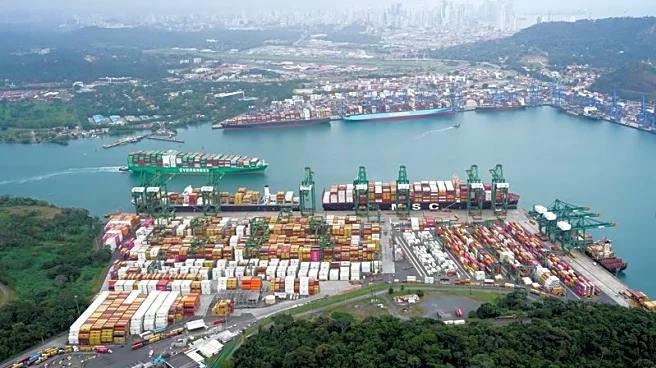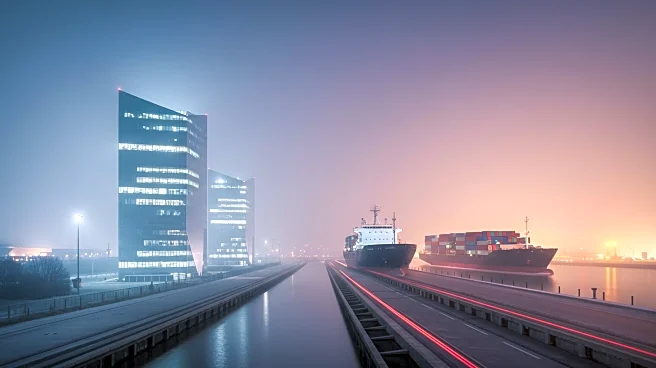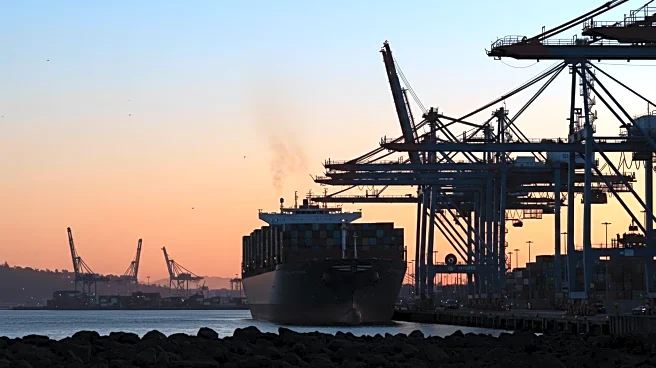What's Happening?
The Port of Churchill on Hudson Bay is being considered for development to serve container ships, potentially creating competition with the Port of Duluth on Lake Superior. Originally opened in 1931, the port was designed to export Western Canadian agricultural products to Europe. However, its competitiveness declined after the completion of the St. Lawrence Seaway in the late 1950s, leading to its closure in the late 1990s. Recent plans aim to upgrade the railway line connecting Churchill to Western Canada and the Northwestern United States, potentially diverting container traffic from the Panama Canal, which has been affected by drought. The port's water depth could be increased to accommodate larger container ships, enhancing its capacity and operational season.
Why It's Important?
The development of the Port of Churchill could significantly impact trade routes between Europe and North America, offering a faster alternative to the Panama Canal. This could reduce transportation costs and time-in-transit for containers, benefiting industries reliant on timely deliveries. The port's ability to handle larger ships could also increase its competitiveness, potentially attracting more business and boosting the local economy. However, the success of this initiative depends on reducing railway transportation costs and ensuring efficient logistics to and from the port.
What's Next?
Future steps include deep-dredging the dock area to increase water depth and upgrading railway infrastructure to support heavier loads and double-stack container configurations. These improvements are essential for the port to handle larger container ships and reduce transportation costs. The viability of the port's operations will depend on the volume of container trade between Europe and North America, as well as the willingness of shippers to pay higher costs for faster delivery schedules. Stakeholders will need to innovate to ensure competitive railway transportation costs.
Beyond the Headlines
The development of the Port of Churchill could have broader implications for international trade, potentially shifting established shipping routes and affecting global logistics strategies. It may also influence environmental considerations, as increased shipping activity could impact local ecosystems. Additionally, the port's revival could stimulate economic growth in the region, creating jobs and enhancing infrastructure.












